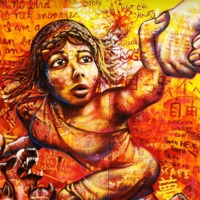
A Thousand Words
Five powerful murals against human trafficking and modern slavery are the basis of this lesson plan. The murals were created collaboratively by diverse groups and in different countries, to include university students, high school students, trafficking survivors and professional artists.There are two 55-minute lessons, depending on the level of your students, that are aimed at older teens, young adults and adults B2+ (upper intermediate to advanced)Materials include reading text about four murals, reading text about trafficking and modern slavery, student worksheet, Action Plan for collaborative project, autonomous learning resources, transcript of audio recordings, slides, Teacher’s Guide. Audio for this lesson plan can be found at https://youtu.be/h8yUtbCzPSA
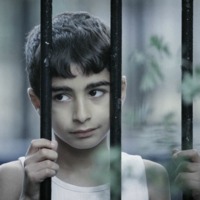
The Letter
The lesson is based around a true story about Nicu, a 9-year-old boy who has been trafficked to the UK. The central focus is a beautiful short film, based on the true narrative, in which Nicu reads an imaginary letter to his mother. Sadly, his descriptions of wealth are far removed from the reality of the violence and exploitation he is subjected to. This is not the ‘better life’ that his parents were promised he would have. He is unhappy, alone, and trapped. The lesson finishes with an engaging music video that focuses on the exploitation of a trafficked child forced to work in a factory.Audio for this lesson plan can be found at https://youtu.be/09QE3RsAge8
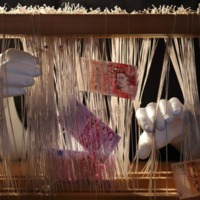
Carpet of Dreams
This lesson examines the use of forced child labour i.e. slavery, in the handmade carpet industry. The initial focus is a true life narrative told by Ravi, who was forced to weave handmade carpets for up to 14 hours a day, starved and not paid. Follow-up videos include an excerpt from the acceptance speech of Kailash Satyarthi, Nobel Peace Laureate, 2014 and an authentic TV interview with a global anti-trafficking academic, Siddharth Kara, who addresses the role of the corporate world and consumer choice. The Good News looks at powerful actions that are being taken to eliminate forced child labour. The teaching material also addresses how we, as consumers of products that may contain forced (child) labour, can use our buying power to send a message to manufacturers in order to effect change.Audio for this lesson plan can be found at https://youtu.be/XupzUpXspDg

Cocoa Truth
This lesson examines the use of forced labour, including forced child labour, in the cocoa industry. The content specifically focuses on the exploitation of children in the Ivory Coast. The lesson also addresses how we, as consumers of cocoa-based products, in particular chocolate, can use our buying power to influence chocolate companies.There are two 55-minute lessons, depending on the level of your students, and is aimed at older teens, young adults and adults B1+ (upper intermediate to advanced)Materials include Peter’s story, information about slavery in the cocoa industry, real-life interview with the Director of a shelter for trafficked children, student worksheet, autonomous learning resources, slides, audio recording of Peter’s narrative, Teacher’s Guide. Audio for this lesson plan can be found at https://youtu.be/qLnUMjhZxuA

Something Doesn't Feel Right
Something Doesn't Feel Right provides lessons and resources for teaching on identifying signs of human trafficking at airports and on flights.This lesson looks at real life events where airline employees effectively identified cases of human trafficking. In all cases the airline agents had been specifically trained to identify indicators of human trafficking. The lesson content also addresses the way social media is used by traffickers to recruit victims, specifically youth. There are two 55-minute lessons, depending on the level of your students. it is aimed at older teens, young adults, adults, B2+ (upper intermediate to advanced)Materials include True narrative at airport, student worksheet, autonomous learning resources, transcripts of authentic videos, slides, information about human trafficking and modern slavery, Teacher’s Guide.
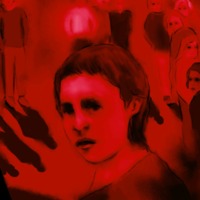
My Future Is My Choice
My Future Is My Choice provides a lesson plan and resources for teaching on forced marriage, child marriage and honour-based violence and the possible long-term consequences of these crimes. We approach this subject sensitively and gently beginning with a powerful true narrative in which child marriage is fortunately prevented. The theme is introduced through artwork, and as the content progresses students learn that this crime is closely tied to control, violence and exploitation. There are two 55-minute lessons, depending on the level of your students and is aimed at older teens, young adults, adults, B1+ (upper intermediate to advanced)Materials include Laila’s story, student worksheet, autonomous learning resources, audio recording and transcript, Shahina’s story: transcript of video narrative, information about human trafficking and modern slavery, slides, Teacher’s Guide.Audio for this lesson plan can be found at https://youtu.be/JkGirIiPGfg
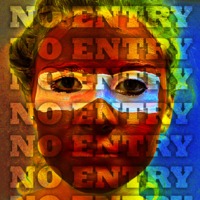
Eyes Wide Shut
Eyes Wide Shut provides a lesson plan and resources for teaching about child grooming.This lesson is about Sarah, a young girl in the UK who was groomed and exploited for seven years. The grooming began when she was aged 10, and then as a 12-year-old,Sarah became a victim of human trafficking for child commercial sexual exploitation(CCSE). The lesson title, EYES WIDE SHUT is a reference to the fact that nobodyseemed to notice – of if they did, no action was taken for several years. This is a true story.There are two 55-minute lessons, depending on the level of your students. The lessons are aimed at older teens, young adults and adults, B1+ (upper intermediate to advanced).Material's include Sarah’s story, information about the grooming process, student worksheet, autonomous learning resources, slides, audio recording, Teacher’s Guide. Audio for this lesson plan can be found at https://youtu.be/4797g8HuMow

The Truth Behind Closed Doors
'The Truth Behind Closed Doors' provides a lesson plan and resources for teaching about domestic servtiude - the exploitation and mistreatment of domestic workers, usually in private homes. Exploitation of domestic workers can happen to migrants domestic workers who have left their fmailies to earn money abroad, but also to workers in private homes in their own country of origin.The lesson plan provides two 55-minute lessons, depending on the level of your students. It is aimed at Older teens, young adults and adults, B2+ (upper intermediate to advances)Materials include: Rose’s personal narrative, student worksheet, autonomous learning resources, information about human trafficking and modern slavery, transcripts of audio recordings, slides, Teacher’s Guide Audio for this lesson plan can be found at https://youtu.be/i28Bev-_sFs

Wall of Dignity
In 1967, Detroit experienced one of the most brutal race rebellions in its history. In the early hours of June 23rd, the police raided an after hours club. Expecting to find a few people inside, they instead found 82 individuals. Everyone was arrested and escorted from the building, and as this happened, a crowd of 200 people gathered. As the night slowly crept into the next morning, violence and looting emerged on Twelfth Street, and the Detroit rebellion was underway. The rebellion carried on for five days. Mayor Jerome Cavanagh initially sought to quash the uprising with police units, but failed to gain support for this tactic as many African Americans in the city deemed the police the problem. In 1968, a year after Detroit’s violent rebellion, a local community organizer named Frank Ditto contacted muralists Bill Walker and Eugene Eda Wade, asking them to create a mural in his local community. Wanting to create a mural that could project an expression of black unity during a time of racial pain, Walker and Wade set about creating the Wall of Dignity. Painted on the façade of an abandoned ice-skating rink, the mural was broken down into three main sections. The top half of the mural depicted diasporic scenes of ancient life in Africa, whilst the middle section functioned as a collection of portraits of prominent African American men and women who sacrificed their lives by fighting for black liberation throughout history. The faces of Marcus Garvey, Malcolm X, Martin Luther King Jr., Mary McLeod Bethune and Stokely Carmichael line the wall. The bottom section of the mural, enveloping the words ‘The Wall of Dignity’, depicts scenes of enslavement. Silhouetted figures of manacled men and women stretching their chains taut as they stretch for freedom are countered by figures raising their unshackled hands to the sky in moment of liberty. Towards the left-hand side of the mural, a poem titled ‘Slave Ship’ reads:
I am a prince, speak with respect I shall not be chained to your Bloody deck To live in this filth and stench? Ooooaaee a poor soul have died on his bench This meaning does burst the drums of my ears Long hours from my home seem like years A prince to ear the food of jackals!! My arms, my leg bleed from your shackles You must look to my woman What had been done to one so sweet, so mild? AAAHHH! Within here was my child. Strange tongued-golden haired man I will not journey to your land. Leave me…leave me be… Cast my carcass into the sea The sea.. Black..Black like me.
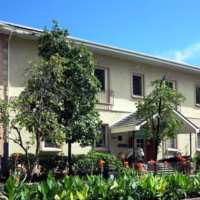
Seychelles Natural History Museum
The Seychelles Natural History Museum explores the history of the Seychelles, from the island's geological development to the Second World War. It is located in Victoria, the capital city, next to the main post office. The museum covers botany, zoology, geology and anthropology, as well as military and social history. It receives around 1,500 visitors per year, largely from overseas.
The museum has one gallery that is divided into thematic areas. Seven prominent aspects of Seychelles’ natural heritage are showcased through displays with artefacts and small dioramas. These include the flora and fauna of the island, religious practices and the movement for independence. Other areas examine traditional crafts and innovative inventions.
One of the sections in the exhibition examines the system of slavery that thrived in the Seychelles during the eighteenth and nineteenth centuries. The majority of the enslaved were forcibly transported from Madagascar and Mozambique to work on the plantations. The display includes instruments of brutality, including an iron slave collar with bells that made escape impossible for the wearer. It also includes archival material, such as newspaper advertisements offering slaves for sale. The section finishes with an inspiring story of the enslaved resistance leader Pompey.
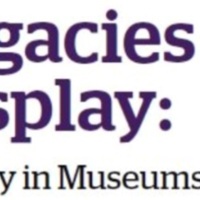
National Museum Afroperuano
The National Museum Afroperuano (or National Museum of Afro-Peruvian History) opened in 2009. Housed in the 'House of Thirteen Coins', in Lima, the museum is dedicated to acquiring, preserving and interpreting objects relating to African history in Peru.
The exhibitions begin by examining the arrival of Africans in Peru, via the Portuguese slave trade. The interpretation explores the process of enslavement and transportation alongside the nature of plantation work and the treatment of the enslaved by the Portuguese. A range of artefacts, artist representations and artefacts visually present these issues to visitors.
The exhibition examines the abolition of slavery in 1856 following the rise of Simon Bolivar and the independence of Peru. Objects and photographs then depict the influences of African culture in different aspects of Peruvian life, including music, dress, art and food.
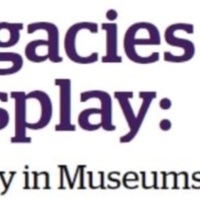
House of Negritude and Human Rights
The House of Negritude and Human Rights opened in 1971 in the former Champagney town hall. It relocated to its present site in 1995. The museum was founded after local historian René Simonin discovered a document in the Haute-Saône departmental archives. This document is known as 'Article 29' of the Champagney Register of Grievances. In 1789, the inhabitants of Champagney, drew up their list of grievances at the request of King Louis XVI. This document would be used to prepare the meeting of the Estates General that would open the process of the French Revolution. 'Article 29' was a one-of-a-kind request to abolish black slavery on humanitarian grounds.
The museum is a tribute to the "Champagnerots" (people of Champagney) who made this extraordinary request. Text interpretation explores the context of the request, examining the french slave trade and the movement for abolition in other European countries in the nineteenth century. There are artefacts that highlight the terrible conditions faced by the enslaved, including a replica slave ship and items recovered from plantations in Haiti.
The interpretation also goes on to examine other forms of slavery in the contemporary world. This is embedded into the museum's popular education programmes that reflect on the development and importance of human rights around the world.
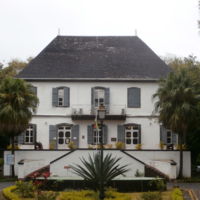
National History Museum
The National History Museum of Mauritius opened in 1948. It is housed in an French colonial villa built in 1772 that was formerly used as a military hospital, a naval museum and the Museum of Historical Souvenirs. It is managed by the Mauritius Museums Council, under the governance of the Ministry of Arts and Culture. The museum explores the social and cultural history of Mauritius; from its discovery by the Portuguese at the start of the sixteenth century, through its successive colonisations by the Dutch, French and British, up to the end of the nineteenth century.
The first floor of the museum exhibits the Dutch, French and Anglo-French wars. Each room explores a different era with artefacts from the period; these range from furniture and decorative arts to weapons, maritime equipment and ceramics.
On the second floor of the museum there is an exhibition dedicated to the British rule of Mauritius, from 1810 until 1968. The interpretation examines the transformation of Mauritius from a maritime economy to an agricultural one, with a key focus on the production of sugar. Alongside this is a discussion of the use of slavery and the development of the slave trade, indentured labour and Indian immigration. Artefacts here include agricultural tools, paintings and drawings depicting the changing landscape and the workforce, and archival documents.
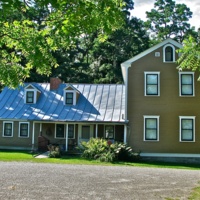
Rokeby Museum
The Rokeby Museum presents a 'nationally significant Underground Railroad story tucked inside a quintessential Vermont experience.' The museum was established in 1961, and covers 100 acres, with ten historic buildings. Originally a prosperous merino wool farm, Rokeby was owned by the Robinson family during the nineteenth and twentieth centuries. The family were abolitionists, and provided a safe haven for fugitive slaves from the American South.
The Underground Railroad Education Centre which marks the entrance to the museum houses the sites permanent museum exhibitions. 'Free & Safe: The Underground Railroad in Vermont' tells the stories of Jesse and Simon; two fugitive slaves who found shelter at Rokeby during the 1830s. Using a range of historic documents and artefacts the exhibition traces their journey from slavery to freedom. It also introduces the Robinson family and their support of the American abolition movement. The use of audio and film, recreating some of the voices of the exhibition's main characters, brings the history to life for visitors.
The rest of the museum is made up of historic buildings, including the main farmhouse, that have been restored and refurnished in order to provide visitors with a glimpse as to what life would have been like on the farm when Jesse and Simon were there. It is thought that both would have spent a significant length of time working on the farm before moving on towards Canada.

Mobee Royal Family Orginal Slave Relics Museum
The Mobee Royal Family Original Slave Relics Museum is a small museum housed in a nineteenth century colonial building. It showcases the role of the local 'Chief Mobee' in the enslavement of local Africans during the transatlantic slave trade, as well as the role of his son (and successor) in abolishing slavery in the area.
The museum houses one exhibition which discusses the arrival of Europeans to the Badagry area and the origins of the trade in human beings. Artefacts highlight the brutal nature of the capture and the enslavement of African people. These include yokes, chains, a mouth lock that presented the captives from speaking, and handcuffs for children. Other objects are examples of trade goods that were received by the Chief in exchange for a supply of people. Text interpretation also provides visitors with information about the terrible conditions faced by the enslaved during the Middle Passage, and images provide representations of life on the plantations.
The museum is often visited as part of a 'Black History Tour' with the former slave market and the Black History Museum.
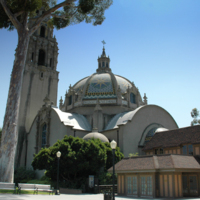
San Diego Museum of Man
The San Diego Museum of Man is an anthropological museum that originated from the 1915 Panama-California Exposition that celebrated the opening of the Panama Canal. Over the last century, the museum has expanded and developed in its original buildings at San Diego's Balboa Park. It took its present name in 1978. The museum's mission is to inspire human connections by exploring human experiences, around the world and through the ages.
The museum features twelve permanent exhibitions that explore a range of themes linking to human development and cultures. These include 'Ancient Egypt', 'Living with Animals' which explores the human practice of keeping pets, and 'PostSecret' which examines the concept of secrecy throughout societies.
Another permanent exhibition, 'Race: Are we so different?' explores the distinctions of race and the origins of racism in America. A timeline maps instances of racism throughout the nation, and includes focusses on Native American communities, as well as enslaved Africans, Civil Rights and the Jim Crow era. Text interpretation also includes biological facts about race and genetics to address long held historic views about hierarchies of race.
Initially a temporary exhibition, it was so successful with visitors the museum decided to house it permanently. 'Race: Are we so different?' was developed in conjunction with the American Anthropological Association and the Science Museum of Minnesota. The exhibition features heavily in the museum's school programmes in providing a platform to promote discussion of feeling, thinking, acting, and reflecting on race and identity, and to raise awareness and build positive relationships across communities in America today.
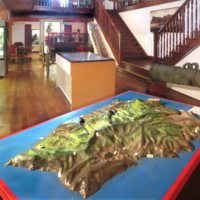
Museum of Saint Helena
The Museum of Saint Helena originated as a small natural history collection in 1854. Over the last 150 years it has moved three times before being officially opened in its current site in 2002 to mark the 500th anniversary of the island's discovery. It is housed in an eighteenth-century former power station in the island's capital, Jamestown. The museum explores the history of St Helena and it's position in the world. It has a large collection of physical artefacts supplemented by a digital archive of images, videos and audio.
The permanent exhibition offers a chronological view of Saint Helena's history, beginning with its geological development. The displays then explore the discovery of the island by European's, the role of the East India Company and migration. There is also a display about Napoleon Bonaparte's exile to Saint Helena.
Within the displays about colonisation and the East India Company are mentions of enslaved Africans brought to the island. Abolition and emancipation are also examined, as the interpretation moves on to explore the diverse make up of Saint Helena's population into the twentieth century. These displays are supported with artefacts and finds from recent archaeological digs on the island.
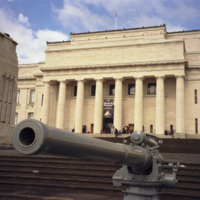
Auckland War Memorial Museum Tāmaki Paenga Hira
The Auckland War Memorial Museum Tāmaki Paenga Hira is one of New Zealand's oldest museum. Founded in 1852, the museum was formally inaugurated in its current site in 1929. It narrates the story of New Zealand, its place in the Pacific, and its people. The museum is also a war memorial for Auckland and houses one of New Zealand's three national heritage libraries.
The museum's collections incorporate military history, social history, local history, natural history and decorative arts. These are displayed through a range of permanent and temporary exhibitions, and on the museum's website. The exhibitions are themed and cover New Zealand's involvement in conflict, its natural history and ecological development and the arrival of Europeans. It also has three permanent galleries that explore its globally significant collection of Maori artefacts.
'He Taonga Māori' (or the Maori Court) is the gallery that greets visitors when they enter the museum's ground floor. This exhibition interprets the past, present and future of the Maori communities in New Zealand using over 1000 objects and a number of original, full-sized Maori buildings, including a meeting house. The collections are used to illustrate everyday Maori life, and range from carved wooden items, to woven textiles and tools. Oral testimonies from members of the Maori community are used to add a further layer of interpretation to the artefacts. A small area of the display discusses the Maori use of slavery, particularly with regards to captives from war.
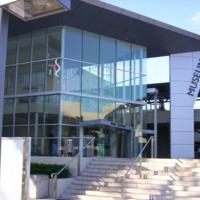
Queensland Museum
The Queensland Museum is a museum of natural history, science, human achievement and local interest that was founded by the Queensland Philosophical Society in 1862. Over the last century it has been housed in various sites, namely former colonial administrative buildings, until the local government had a purpose built site constructed for the museum on Brisbane's South Bank in 1986. Funded by the Queensland Government, the Queensland Museum Trust operates a number of sites in addition to the Queensland Museum. These include the Science Centre, the Queensland Museum of Tropics and the Workshops Rail Museum.
The museum's aim is to connect its visitors to Queensland the place, the people and the region's position in the world through artefacts, interactives and events. There are over one million items in its collections. The permanent exhibitions look at Queensland's ecological and social development.
In 'Histories of Queensland,' the exhibition explores the theme of migration to the area. As well as examining the European migration to the area during the eighteenth and nineteenth centuries, the displays discuss the role of indentured labourers from the South Sea Islands. These people were forcibly transported from their homes to work in Queensland's sugar industry. The display informs visitors about the hardships faced by these individuals and the negative legacies this brutal enslavement inflicted on the South Sea Islands from the nineteenth century until today.
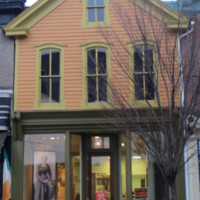
Harriet Tubman Museum
The Harriet Tubman Museum is a small museum located in Cambridge, Maryland, a few miles from where Harriet Tubman was born. The museum originated as a community organization which was planning a single three-day event honouring Harriet Tubman in 1983. Over the years, the Harriet Tubman Organisation has adjusted its goals; today its mission 'is to develop programs and services for children and families and to preserve the history and memory of Harriet Tubman by offering the general public an interpretive history of her achievements.'
The museum's permanent exhibition is a combination of interpretive text and artefacts, many recovered from nearby plantations. The artefacts on display represent the objects that the enslaved would have used in their daily lives, as well as more brutal symbols of slavery like shackles. The museum, which accepts admission donations, is usually open Tuesday - Saturday. Through the museum, visitors can also organise trips to the actual property where Tubman was born and worked. The museum hosts school groups as well as a range of special events throughout the year.